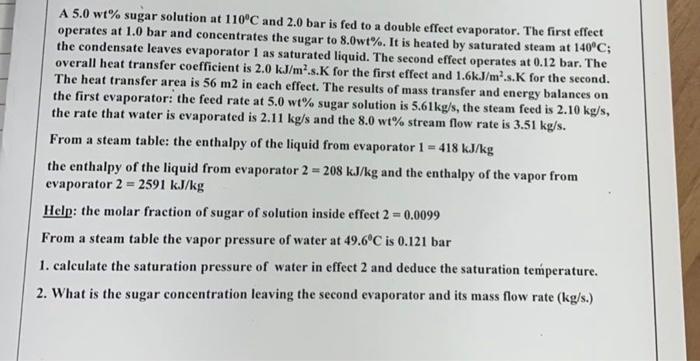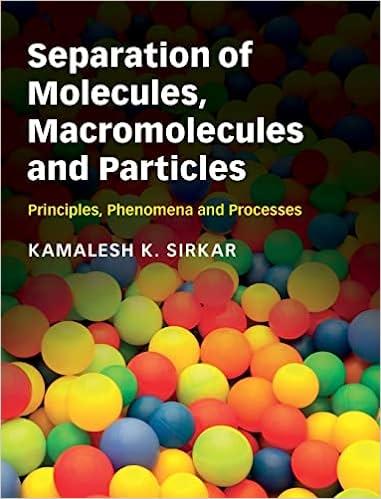Answered step by step
Verified Expert Solution
Question
1 Approved Answer
Good day, please, I need your help solving this complicated question in details. Iam looking forward to seeing your great answer. A 5.0 wt% sugar
Good day,
A 5.0 wt% sugar solution at 110C and 2.0 bar is fed to a double effect evaporator. The first effect operates at 1.0 bar and concentrates the sugar to 8.0wt%. It is heated by saturated steam at 140C; the condensate leaves evaporator 1 as saturated liquid. The second effect operates at 0.12 bar. The overall heat transfer coefficient is 2.0 kJ/m.s.K for the first effect and 1.6kJ/m.s.K for the second. The heat transfer area is 56 m2 in each effect. The results of mass transfer and energy balances on the first evaporator: the feed rate at 5.0 wt% sugar solution is 5.61kg/s, the steam feed is 2.10 kg/s, the rate that water is evaporated is 2.11 kg/s and the 8.0 wt% stream flow rate is 3.51 kg/s. From a steam table: the enthalpy of the liquid from evaporator 1 = 418 kJ/kg the enthalpy of the liquid from evaporator 2 = 208 kJ/kg and the enthalpy of the vapor from evaporator 2 = 2591 kJ/kg Help: the molar fraction of sugar of solution inside effect 2 = 0.0099 From a steam table the vapor pressure of water at 49.6C is 0.121 bar 1. calculate the saturation pressure of water in effect 2 and deduce the saturation temperature. 2. What is the sugar concentration leaving the second evaporator and its mass flow rate (kg/s.) please, I need your help solving this complicated question in details. Iam looking forward to seeing your great answer. 

Step by Step Solution
There are 3 Steps involved in it
Step: 1

Get Instant Access to Expert-Tailored Solutions
See step-by-step solutions with expert insights and AI powered tools for academic success
Step: 2

Step: 3

Ace Your Homework with AI
Get the answers you need in no time with our AI-driven, step-by-step assistance
Get Started


